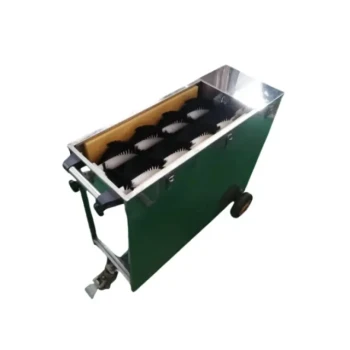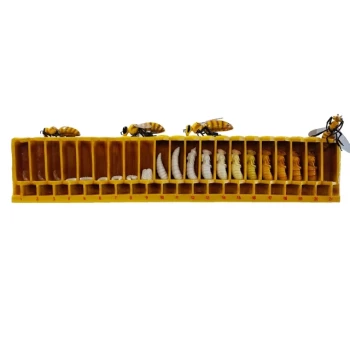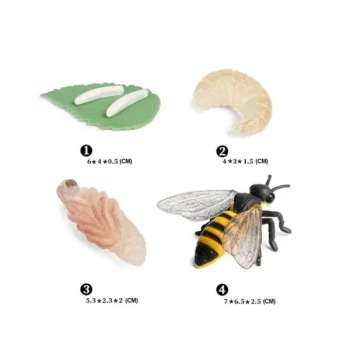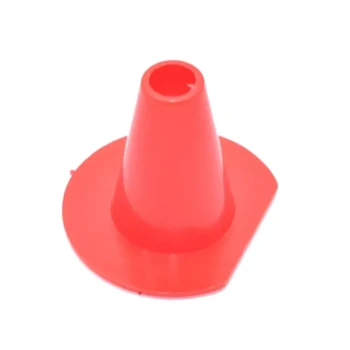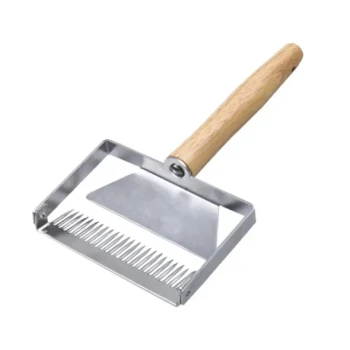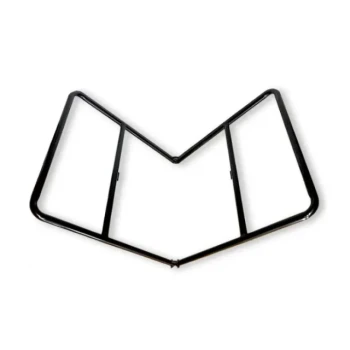For the best results, place a bee watering station in a low-traffic area of your yard that is still visible, such as within a garden or at the edge of a flower bed. This location keeps bees safe from disturbances while ensuring they can easily find the water source near the plants they are already visiting for pollen and nectar.
The ideal location for a bee waterer is a careful balance: it must be near the flowers they frequent, but away from high-traffic human areas to ensure safety and accessibility for both bees and people.

The Principles of Effective Placement
Successfully providing water for bees requires understanding their behavior and needs. The goal is to create a reliable and safe resource that complements their natural foraging patterns.
Ensure Proximity to Food Sources
Bees are models of efficiency. They are unlikely to travel far from their primary food sources—your flowers—just for a drink.
Placing your watering station within or adjacent to a flower bed, vegetable garden, or patch of native plants makes it a convenient stop. They can gather water, pollen, and nectar in a single area.
Prioritize Bee Safety and Access
A water source is only helpful if a bee can use it without risk. Bees can easily drown, even in very shallow water.
Your station's location should be on stable, level ground. The water container itself must have "landing zones" like marbles, pebbles, twigs, or wine corks that break the water's surface, allowing bees to land and drink safely.
Maintain Distance from Human Activity
To prevent unwanted interactions, position the waterer away from areas people frequent. Bees are generally not aggressive when foraging for water, but accidents can happen.
Avoid placing it near doorways, patios, walkways, or children's play areas. A quiet corner of the yard is always a safer choice for everyone.
Consider Sun and Wind Exposure
A spot that receives morning sun is ideal. The warmth helps bees regulate their body temperature, and it will encourage them to visit earlier in the day.
Try to find a location that is somewhat sheltered from strong winds. This makes it easier for the bees to land and prevents the shallow water in your station from evaporating too quickly on hot days.
Common Placement Mistakes to Avoid
Where you don't put the station is as important as where you do. Avoiding these common pitfalls will make your waterer more effective and prevent unintended problems.
Creating a Mosquito Hazard
Any standing water can become a breeding ground for mosquitoes. A poorly maintained bee waterer poses a health risk.
You must commit to changing the water every 1-2 days. This simple act disrupts the mosquito life cycle and ensures the bees have a fresh, clean supply.
Forgetting Visibility and Maintenance
The reference notes that the station should be "still visible." This is practical advice.
If you place your waterer in such a remote location that you forget about it, it will quickly become dry and useless. Place it where you will see it as a daily reminder to clean and refill it.
Attracting Unwanted Visitors
A simple bee waterer with fresh water is unlikely to attract pests. However, if you add anything like sugar or honey, you will attract wasps, ants, and other insects you may not want.
Never add sugar to the water. Bees need plain water, especially in hot weather, to cool the hive and dilute honey for their young.
Making the Right Choice for Your Goal
Select a location by balancing bee needs with your own priorities for your outdoor space.
- If your primary focus is helping the most bees: Place the station in a sunny, wind-protected spot directly within or at the edge of a large flower bed or vegetable garden.
- If your primary focus is child and pet safety: Choose a location at the far end of your yard, away from all paths and play areas, but ensure it's still visible for maintenance.
- If your primary focus is ease of maintenance: Position the waterer near a hose or outdoor spigot to make refills simple, but confirm the area is not subject to heavy foot traffic.
Thoughtful placement turns a simple dish of water into a vital resource that supports the health of your local pollinators.
Summary Table:
| Placement Factor | Ideal Location/Consideration |
|---|---|
| Proximity to Food | Within or adjacent to flower beds or gardens |
| Safety & Access | Stable, level ground with landing zones (pebbles, twigs) |
| Human Activity | Away from doorways, patios, and play areas |
| Sun & Wind | Morning sun, sheltered from strong winds |
| Maintenance | Visible location for easy water changes every 1-2 days |
Support Your Apiary with Professional-Grade Supplies from HONESTBEE
Providing a reliable water source is just one part of successful beekeeping. For commercial apiaries and distributors, having durable, efficient equipment is essential for scaling your operations and ensuring hive health.
HONESTBEE specializes in wholesale beekeeping supplies and equipment designed for the demands of commercial beekeeping. From high-capacity feeders and durable hive components to protective gear and extraction tools, our products help you maintain healthy, productive colonies.
Ready to enhance your beekeeping operations with reliable, wholesale-priced equipment? Contact our team today to discuss your specific needs and discover how HONESTBEE can support your business growth.
Visual Guide
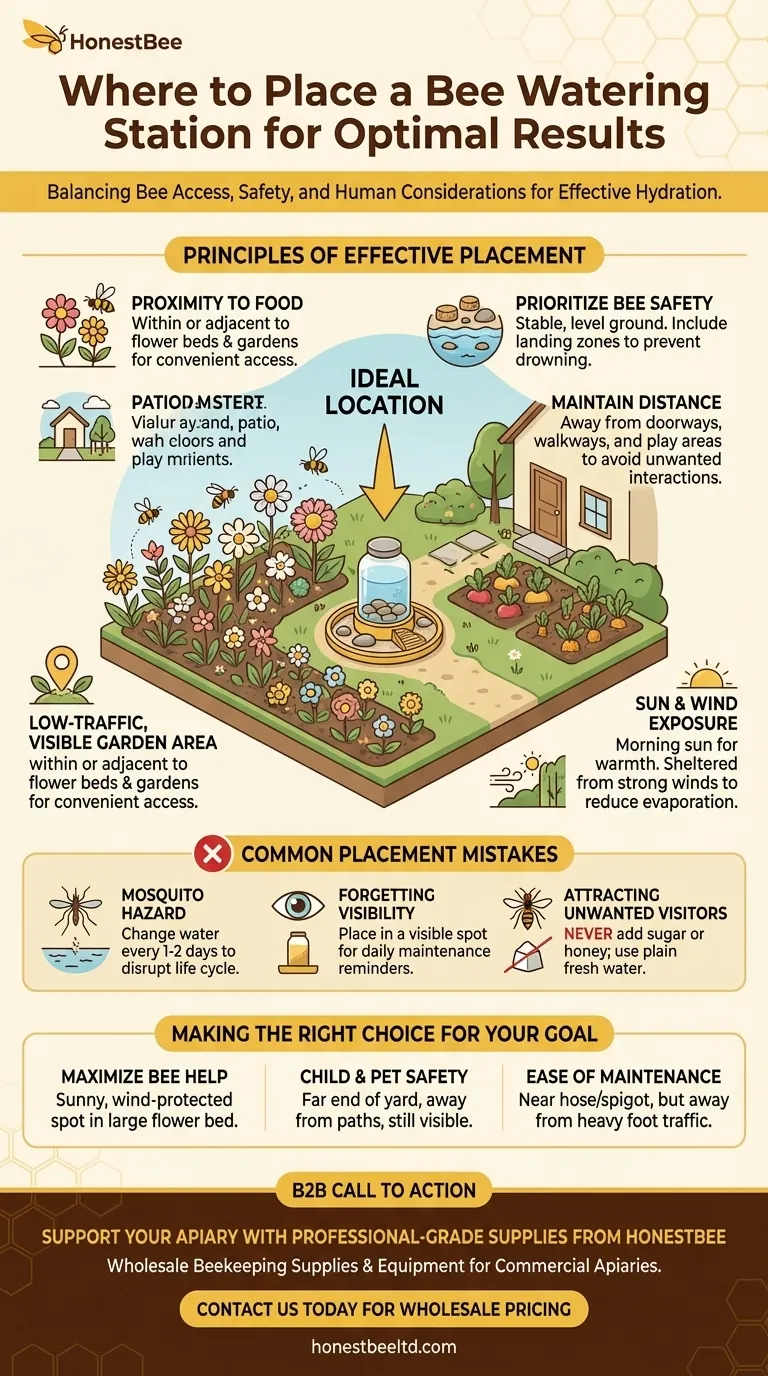
Related Products
- HONESTBEE Professional Entrance Bee Feeder Hive Nutrition Solution
- Automatic Honey Flow Beehive 4 Frame Mini Hive for Beekeeping
- Portable Uncapping Tank Holder Uncapping Bench for Beekeeping
- HONESTBEE Advanced Ergonomic Stainless Steel Hive Tool for Beekeeping
- Professional Dual-End Stainless Steel Hive Tool for Beekeeping
People Also Ask
- How does the entrance feeder method work? A Guide to Simple But Risky Hive Feeding
- How to make an entrance feeder for bees? A DIY Guide for Safe & Effective Feeding
- What is the best feeder for bees? Choose the Right Feeder for Your Hive's Success
- Are entrance feeders good for bees? Prioritize Hive Health Over Convenience
- How do you make an entrance feeder for bees? A Guide to Safe & Effective Hive Feeding






